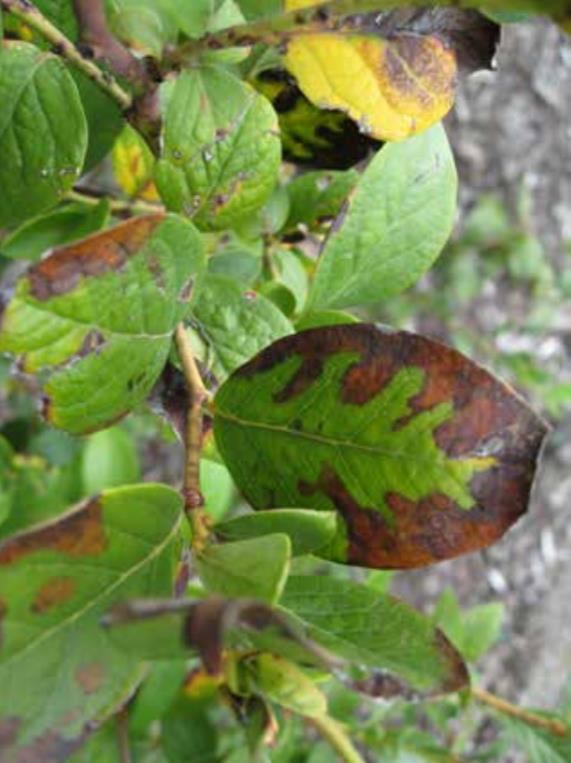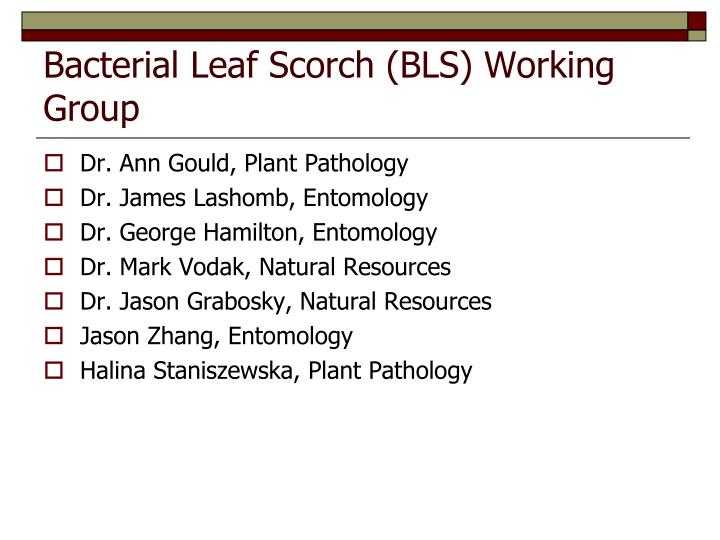

Susceptible plants will eventually die, however they may still survive for a few years if disease spread and plant decline is slow. There is no known treatment for bacterial leaf scorch once plants become infected.
BACTERIAL LEAF SCORCH FREE
Leaves die and flowering becomes irregular.Įven some symptomless cultivars, known to be infected with the disease but otherwise showing no outward sign of infection, have displayed significant yield losses in comparison to plants known to be free of Xylella fastidiosa.

Infected plants become stunted and less productive. The presence of bacteria in the plant sap restricts flow of water and nutrients in the plant. Once the leaves have dropped, the plant takes on a skeleton-like appearance (Figure 2) and eventually dies. Infected leaves drop from the bush and young stems may turn yellow. The ‘burnt’ edge of the leaf progresses unevenly towards the mid rib with a fairly distinct line between the dead part of the leaf and the inner green tissues (Figure 1). Descriptionīacterial leaf scorch symptoms first appear with the tips or edges of leaves developing a burnt appearance along the leaf margin.
BACTERIAL LEAF SCORCH FULL
Email with a clear photo and your contact detailsĪ full list of notifiable plant pests and diseases can be found in Schedule 2 of the NSW Biosecurity Act 2015.Call the Exotic Plant Pest Hotline 1800 084 881.You can report notifiable plant pests and diseases by one of the following methods: Notifiable statusīacterial leaf scorch of blueberry ( Xylella fastidiosa) is a notifiable plant disease in NSW.Īll notifiable plant pests and diseases must be reported within 1 working day. No strains of Xylella fastidiosa are present in Australia. Xylella fastidiosa is responsible for a number of diseases in other horticultural crops, including Pierce’s disease of grapevine, citrus variegated chlorosis and alfalfa dwarf disease. Once a plant is infected there is no treatment but to destroy infected plants in an attempt to minimise spread. Sap feeding insects spread the disease between plants.

The bacterium lives and multiplies in the sap, blocking water uptake to the leaves. This disease is a serious threat to Australia’s blueberry industry.īacterial leaf scorch of blueberry is caused by the bacterium Xylella fastidiosa. Bacterial leaf scorch of blueberry ( Xylella fastidiosa) is an exotic plant pest not present in Australia.


 0 kommentar(er)
0 kommentar(er)
